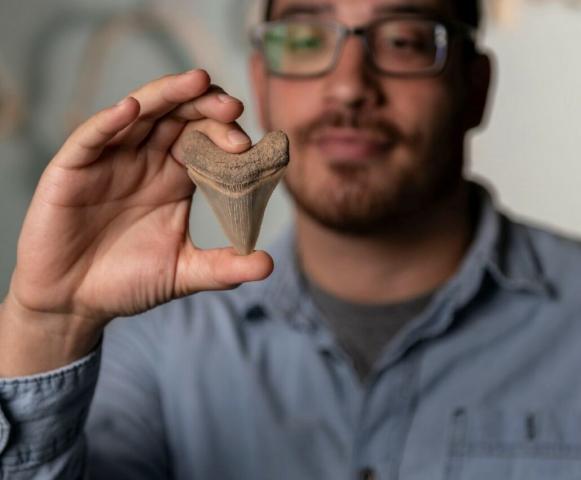
Victor Perez, visiting assistant professor of environmental studies, was co-author on two scholarly articles published recently. Both articles focused on fossilized shark teeth.
Palaeogeography, Palaeoclimatology, Palaeoecology (Vol. 661, March 2025) published “Marine strontium isotopes preserved in fossil shark teeth calibrate Neogene and mammal evolution” (Killingsworth, Moran, MacFadden, Perez, Pirlo, Ziegler), which was then referenced as a source document for a feature in The Conversation published on Feb. 3. The takeaway in the source article is that marine strontium isotopes preserved in fossilized shark teeth provide a means to better estimate the age of fossil sites, allowing for more precise correlation with known global events throughout Earth history.
Acta Palaeontologica Polonica (Vol. 69 (4) 2024) published “Taphonomic and ecological insights from conspecific bite marks on Otodus megalodon teeth” (Godfrey, Bennett, Perez), which was featured in The Southern Maryland Chronicle on Jan. 9. Godfrey is the curator of paleontology at the Calvert Marine Museum, with collaborators Bennett and Perez working as research affiliates with the museum. This study documents serrated bite marks preserved on fossilized megalodon teeth, which may have been produced during an antagonistic encounter between two of these apex predators or, perhaps, self-bitten after the teeth became dislodged during the act of feeding on a large whale.



